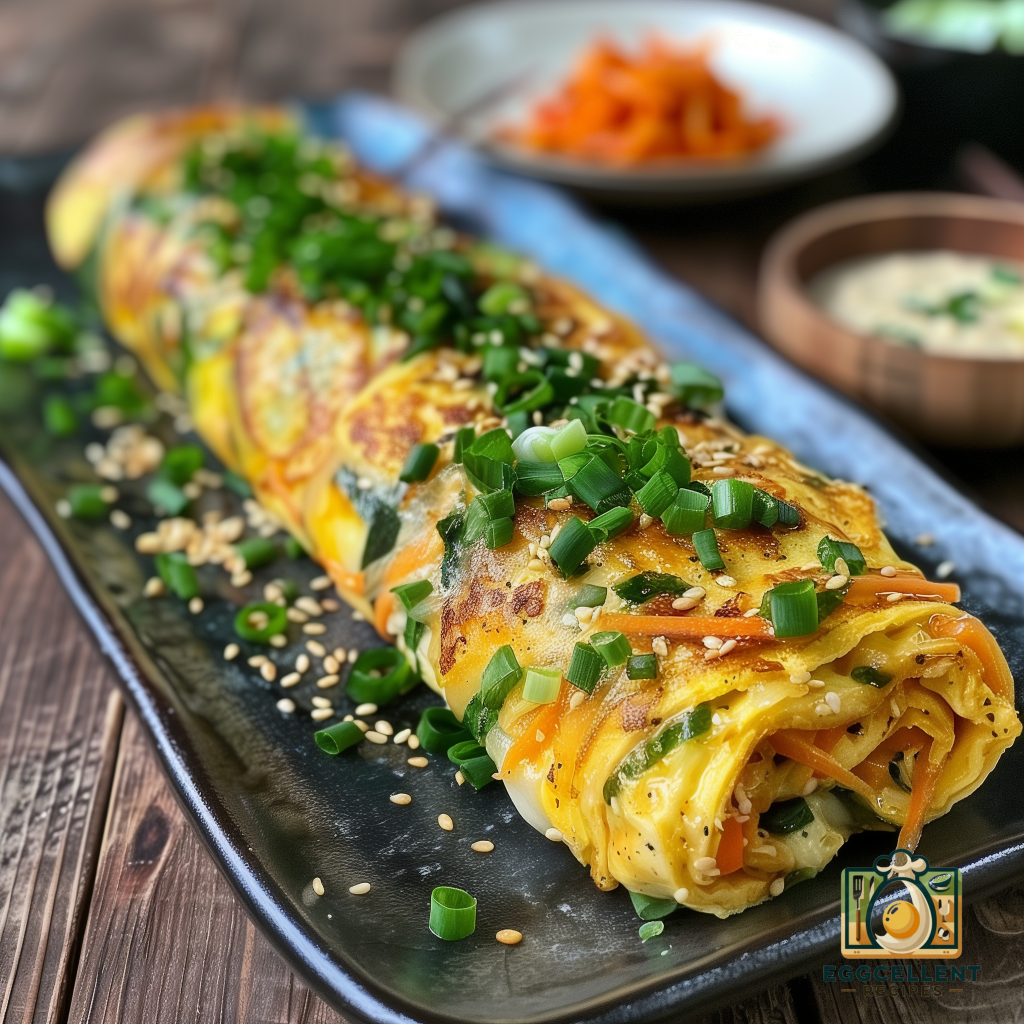
Are you craving something deliciously simple and decidedly Korean for your next meal? Look no further than the Korean Rolled Omelette, or Gyeran Mari, a beloved traditional dish that brings together the savory and satisfying taste of eggs in a unique, roll-up form. This dish is not only a staple breakfast meal but also a popular side dish for any time of the day. Its delicate layers and visually appealing presentation make it a favorite among both kids and adults. Whether you’re looking to add a new recipe to your breakfast lineup or want a quick and nutritious snack, the Korean Rolled Omelette is a versatile choice that promises to delight.
Tips to make the Korean Rolled Omelette (Gyeran Mari) recipe:
1. Strain the Egg Mixture: For a smoother and more refined texture, strain the beaten eggs through a fine sieve. This step removes any chalaza (egg white strings) and ensures the omelette has a uniform consistency.
2. Use a Non-Stick Pan: To prevent sticking and ensure easy flipping, opt for a non-stick pan. A pan with a good non-stick surface is crucial to achieving those perfect, intact rolls.
3. Keep the Heat Low: Cook the omelette over low heat to avoid browning. A gentle heat ensures that the eggs cook evenly, allowing you to roll the omelette without it breaking.
4. Add Ingredients of Your Choice: While the traditional recipe is simple, feel free to add diced vegetables, cheese, or cooked meat to the egg mixture for added flavor and texture. This customization makes the dish versatile and adaptable to different tastes.
5. Roll Gradually: As you cook, gently roll the omelette layer by layer, starting from one edge and using your spatula to fold over. Patience is key here—rushing may cause the omelette to tear.
How to Make Korean Rolled Omelette (Gyeran Mari) Recipe?

Korean Rolled Omelette (Gyeran Mari) Recipe
Equipment
- 1 Non-stick frying pan Preferably rectangular for easier rolling
- 1 Spatula For flipping and rolling the omelette
Ingredients
- 4 Eggs Beaten
- 2 tbsp Carrots Finely chopped
- 2 tbsp Green onions Finely chopped
- 2 tbsp Red bell pepper Finely chopped
- to taste Salt
- to taste Pepper
- 1 tbsp Vegetable oil For cooking
Instructions
- In a bowl, mix the beaten eggs, carrots, green onions, red bell pepper, salt, and pepper.
- Heat the oil in the frying pan over medium heat.
- Pour a thin layer of the egg mixture into the pan. Tilt the pan to spread the mixture evenly.
- When the bottom of the omelette is set but the top is still slightly runny, start rolling the omelette from one end to the other.
- Push the rolled omelette to one side of the pan. Pour another layer of the egg mixture to cover the bottom of the pan again.
- Once the new layer is partially cooked, roll the existing omelette over the new layer to create extra layers.
- Repeat the process until all the egg mixture is used.
- Remove the omelette from the pan and let it cool for a few minutes before slicing.
Notes
Nutrition
I love this recipe, the Korean Rolled Omelette, or Gyeran Mari, is a delightful and colorful dish that brings the essence of Korean cuisine right onto your plate. It’s not just a recipe; it’s an art form that combines eggs, vegetables, and sometimes even meat into a beautiful, rolled presentation. Its simplicity in preparation, coupled with the versatility in ingredients, makes it a perfect dish for breakfast, a side dish, or even a snack.
Mastering the technique of rolling the omelette may take a little practice, but the end result is definitely worth it. Whether you stick to traditional fillings or experiment with your own combinations, Gyeran Mari will undoubtedly add a touch of Korean flavor to your cooking repertoire. So, grab your pan and give this delightful recipe a try. It’s bound to become a favorite for its taste, aesthetics, and the joy of making it.






